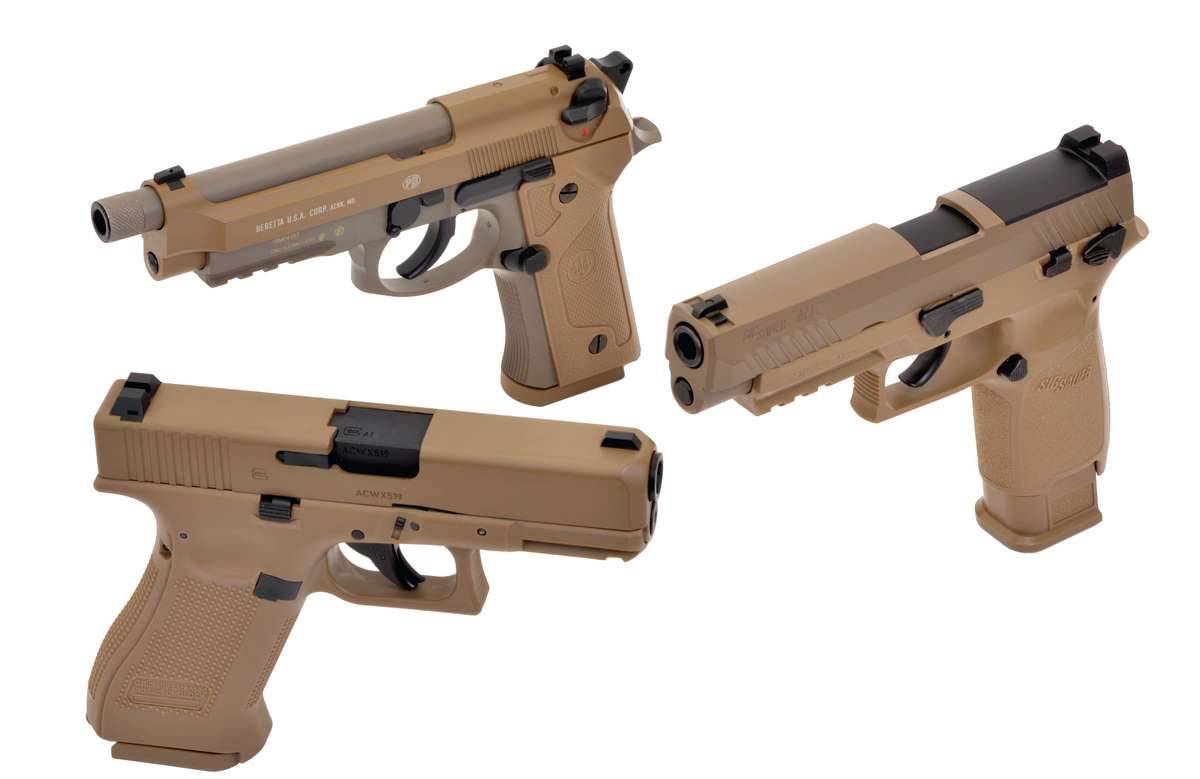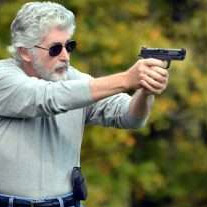It’s Not the One You Think It Is
Pocket pistols are not as big a deal with airgun enthusiasts as they are with folks who carry a handgun for personal protection, even though the first blowback action CO2 pistol, the Walther PPK/S, was regarded as a pocket pistol. To be fair, the pocket pistol label has never really belonged to the PPK/S but rather the c. 1930 PPK, which is a smaller pistol. That’s splitting hairs these days because the PPK is larger than many contemporary pocket pistols, some of which are in larger calibers, too.

The PPS was added as a 9mm model by Walther in 2008 and in 2014 the CO2 model, based on the original PPS design, was introduced. I first tested it just before it was introduced while visiting the Umarex factory in Ulm, Germany. I came away more than impressed with what Umarex had accomplished. For an accurately built airgun, copying the Walther PPS polymer frame and metal slide design, the weight, balance in the hand, sights, trigger pull, and general accuracy, were good enough to make it an early choice for a CO2 training gun, except for the use of a stick magazine. Again to be fair, stick mags were the norm back in 2014, not the exception. It was priced well under $100 making it an exceptionally well-built, high-performance entry-level blowback action air pistol.

The degree of detail Walther put into the air pistol to make it look and feel “authentic” really paid off on the firing line, too. With the exception of the blade safety trigger, replaced with crossbolt safety trigger, the PPS air pistol had the same operating features as its 9mm counterpart and at close combat range, 7 yards, was as accurate as the 9mm. Trigger pull was a bit lighter than the 9mm at 5 lbs., 4.5 oz., with the centerfire models averaging 7 lbs. 11 oz. It was still enough resistance at nearly 5.5 pounds to give the feel of pulling a real semi-auto trigger. And the CO2-powered recoil was strong enough to give a feel to medium loud report. It wasn’t close to a .22 LR pistol but it was more than most .177 caliber air pistols at the time.
I felt that Umarex had checked most of the boxes, with all the important features that make an air pistol authentic; the use of white dot sights to match those on the cartridge gun, the same slide and magazine release levers, an integrated under-muzzle Weaver rail for mounting a small tactical light or laser, and having to pull the slide to the rear to chamber the first BB, and of course, the slide locked back after the last round was fired. The PPS was a hit long before other pocket-sized air pistols were around.

In 2007 the centerfire model was intended for a growing concealed carry market looking for a smaller, yet high-quality, single-stack 9mm pistol. At less than a inch in width, and fairly compact with the standard magazine, the 9mm model drew a solid following, enough that Walther and Umarex saw ample reason to build it as a blowback action air pistol seven years later. When the PPS was updated to the PPS M2 (adapting PPQ M2 design elements, like grip shape and a conventional frame-mounted magazine release), Umarex followed suit and surprisingly updated the CO2 model. Updating an air pistol is almost unprecedented in the airgun world.
The original CO2 model had to use the extended magazine design in order to accommodate the 12 gr. CO2 cartridge in the grip frame, and it made the gun a little leggy. The PPS M2 uses the same approach but the M2 design grips look much better. The 9mm model can be equipped with three different depth (and capacity) magazines, and the trio are part of the PPS M2/LE version, which is the basis for the newer blowback action CO2 model.
When it was first added to the Umarex line as an updated companion to the original PPS CO2 model, I found myself drawn to favoring the earlier style and not the M2. It was rally a matter of choice since both were offered. Now, the PPS M2 has replaced it in the Umarex Walther lineup.

M2/LE Attributes
The PPS M2/LE is the higher capacity centerfire model that comes with the standard short 6-round magazine, an extended 7-round, and the long 8-round, a design which allows for an absolutely authentic match to be used for the CO2 version. The look is far more integrated while still allowing the added magazine length to accommodate the 12 gr. cartridge and internal seating screw. In every other way, except for the triggerguard magazine release, the PPS M2 air pistol is the same quality build as its predecessor. Perhaps even better because of the M2 grip design and how it fits the hand.

What you want in a blowback action air pistol is a slide that locks open when the magazine is empty. Hit the mag release and drop the empty, reload, then press the slide release and the gun has performed exactly like the centerfire pistol. With this one I say, “so what if it is a stick magazine!”
Remember, the PPS (and M2 version) are only 1-inch wide, making them one of the narrowest handguns, 9mm or CO2, in the world. The air pistol still needs the removable backstrap to allow loading the CO2 but it is more integrated than the earlier version.
While it is a matter of conjecture, one other feature Walther chose to discard with the M2 design was the short accessory rail on the dustcover, and the contour of the triggerguard, which now has an undercut design providing a higher grip on the pistol and more relief for the middle finger. Previously it was pressed into the side of the triggerguard magazine release. Combined with the improved grip design the PPS M2 is just more comfortable to hold. And this is important, even with an air pistol if you want to use it for long shooting practice sessions.

The M2 slide also has cleaner lines and the addition of forward slide serrations, which are far more purposeful on the 9mm with its heavy recoil spring, than on the air pistol which offers only light resistance when the slide is racked, but the look is the same.
Reappraising all the features of the PPS and PPS M2 this second time I am sold on the idea that this is definitely a case where version 2.0 is much better than 1.0. Not to say the PPS is not a good gun (I still have mine), just that Walther has made enough improvements to the PPS M2 to make a good gun a great gun, and that goes in any caliber.

The 9mm Battle for Space
The biggest thing that changed in the world of handguns and CO2 air pistols in the time between the PPS and PPS M2 was not so much at Walther, but rather over at Sig Sauer with the development of the Micro-Compact P365, the smallest 9mm and CO2 pistol to date. As a defensive handgun the 9mm Sig has eclipsed almost every other popular design. The P365 CO2 model won hearts and minds with its size and groundbreaking self-contained CO2 BB magazine, but lost a lot of its impact when the gun turned out to suffer from the same velocity anemia as the old Umarex Walther PPK/S. For all its pluses, and there are many, including impressive accuracy at 21 feet, the P365 can’t send steel BBs downrange at any better than an average of 295 fps. Accurately yes, but not fast enough for most. And that is where the Walther PPS M2/LE design weighs in with its old stick magazine and separate CO2 to slam steel BBs downrange at an average of 340 fps, right on par with most full-size and compact blowback action CO2 pistols. The P365 is smaller, but not as capable.


A Word About Safety
Airguns provide the look, feel and operation of their cartridge-firing counterparts and this is one reason why they have become so popular. Airguns in general all look like guns and it is important to remember that the vast majority of people can’t tell an airgun from a cartridge gun. Never brandish an airgun in public. Always, and I can never stress this enough, always treat an airgun as you would a cartridge gun. The same manual of operation and safety should always apply.


I am betting on the Walther. Even in the improved version, I am not that impressed with the Sig. It does not group as well as either my Makarov or Beretta84, both of which throw steel much faster and straighter than the Sig. For a civilian ccw flatness and compactness are more important than higher mag capacity. For years I carried a stainless Walther Ppk 380, and two spare mags. I never felt under gunned or ammo deprived. Don’t feel helpless with a 2 inch 38 , a pr of speed loaders and a couple of speed strips as last ditch. Umarex should come out with an EZ 9mm to make things interesting
Due to its modern creds, thecWalther makes the cut, and it is time for more modern designs like the S&W EZ and Shield models, maybe a different approach from Sig like a 938
My vote is for the walther. I have had 2 of the M2 versions both of which now have a broken slide after a lot of use. Sadly the walther seems to be unavailable in the UK presumably because we have no access to the centre fire version so no training use. The Sig has been a big no no as I have rarely got the mags to retain gas sufficient to fire the pistol and even then it is very unreliable. Shame as its a good looking pistol and must have a lot of demand for training Stateside. Incidentally my Sig is the earlier version.
I like Springfield Armory’s HellCat powder burner. We need an airgun BB model.